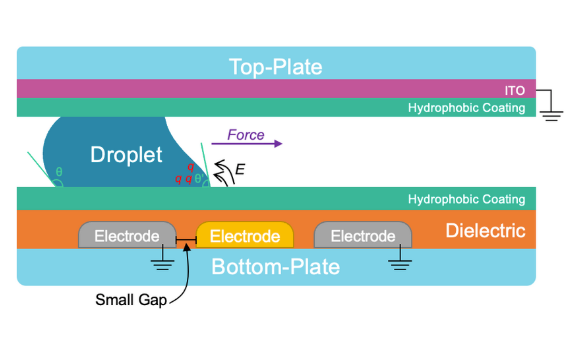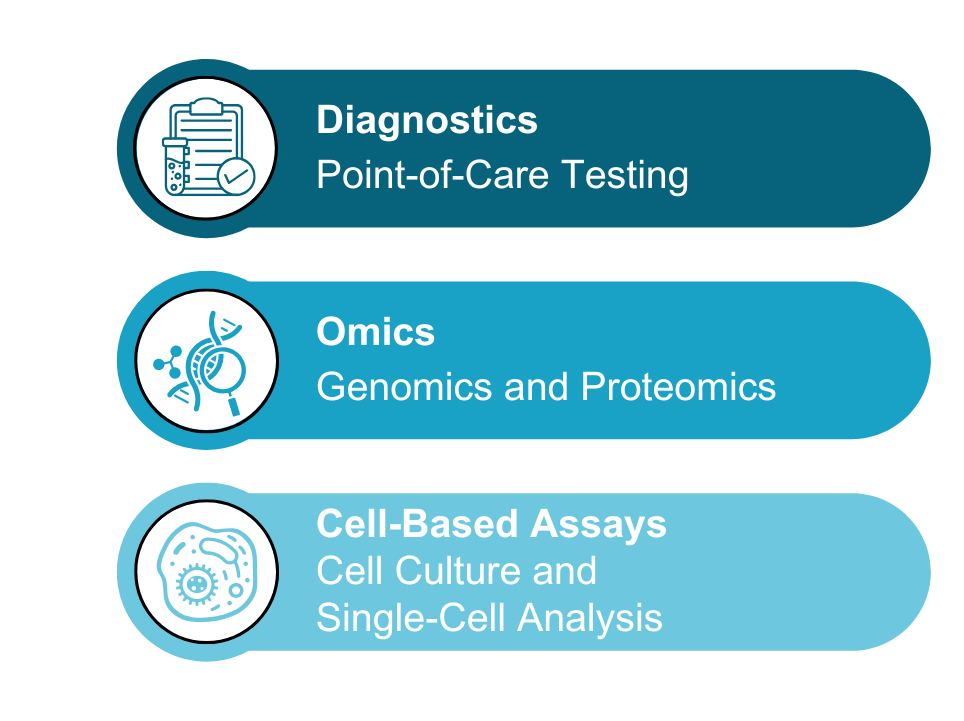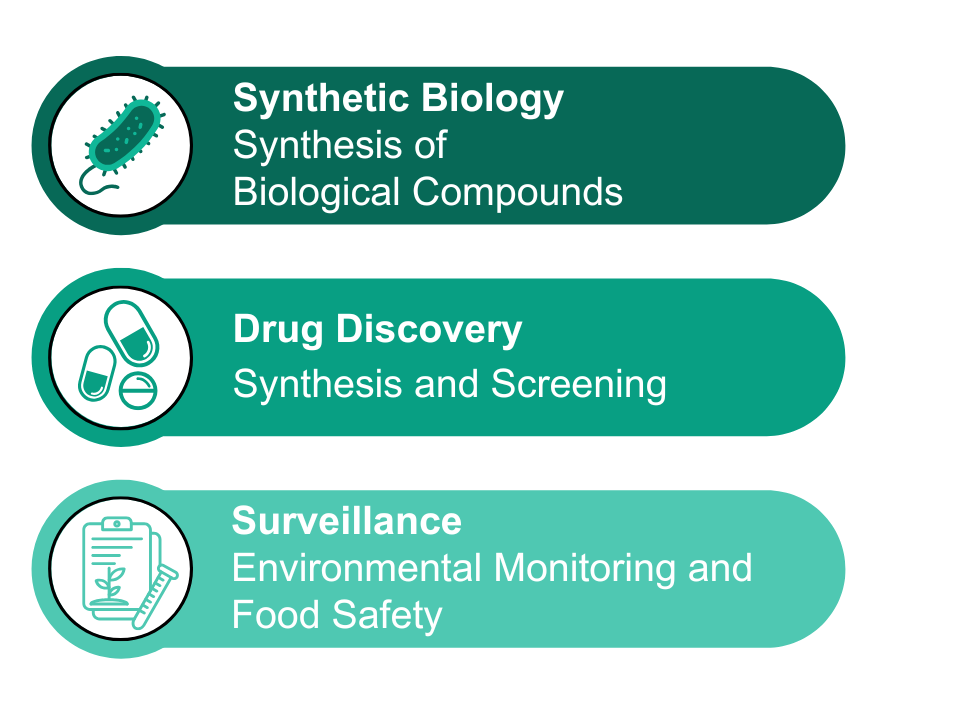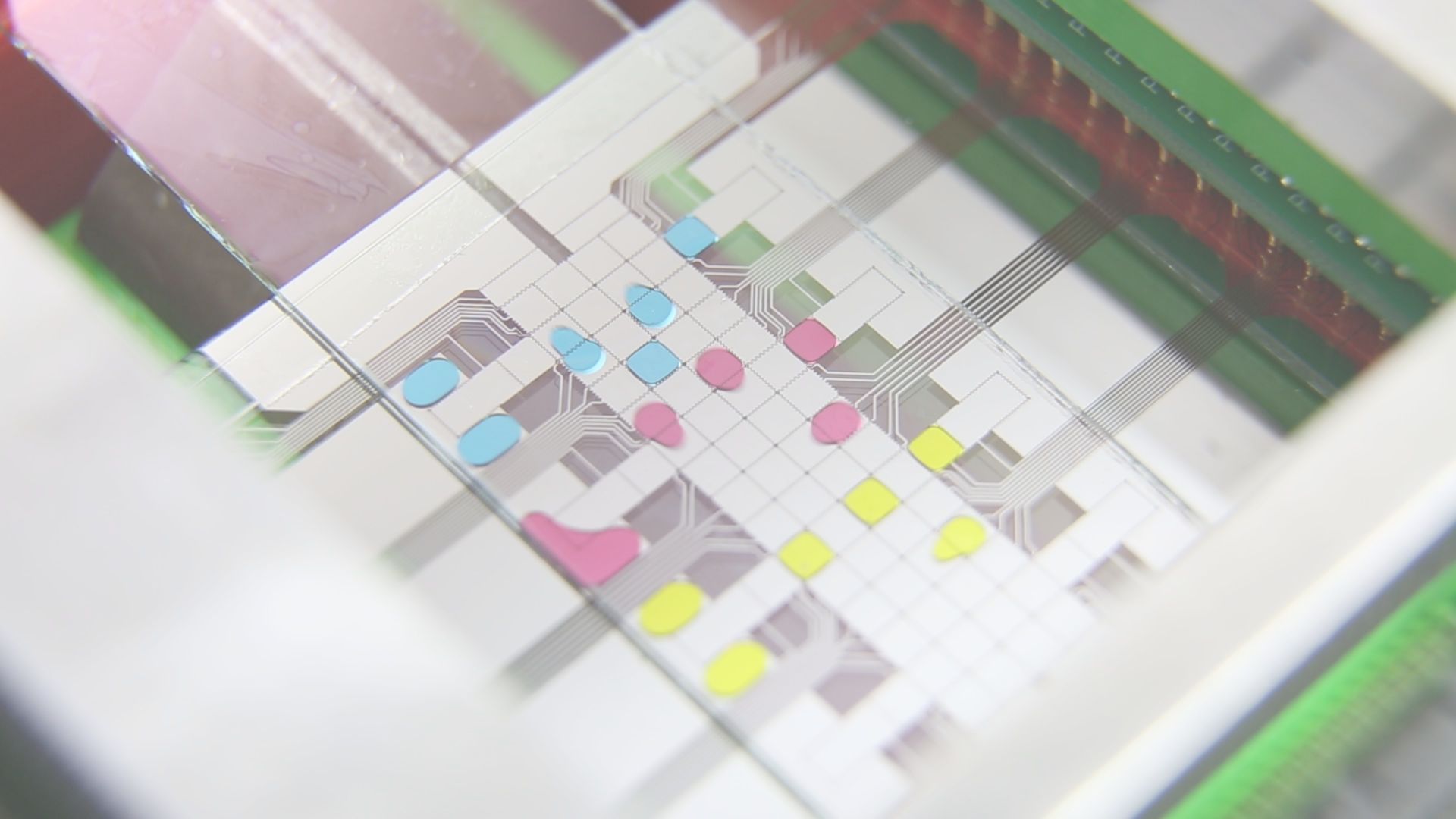go digital
Digital Microfluidics
Read our full DMF article, "Digital Microfluidics: Principles, Practicalities, and Applications," on LinkedIn by clicking the button below.

the next evolution
why dmf?
Digital microfluidics (DMF) is revolutionizing how we handle and manipulate minute volumes of liquid, enabling a wide range of applications from diagnostics and drug discovery to environmental monitoring. By combining principles of electrostatics and careful engineering of surfaces, DMF allows droplets as small as picoliters (pL) to microliters (µL) to be moved, merged, split, and mixed under computer control. Sci-Bots' DropBot systems make DMF accessible and easy to implement, helping our users to explore the diverse applications of DMF’s flexibility and precision.
No Channels, No Clogs
Precision & Control
Scalable & Flexible
Lower Cost
Faster Setup
DropBot v3.0 in Action
An introduction to DMF
Our portable and easy-to-use DropBot platform uses digital microfluidics to transform lab experiences into software that can be optimized, shared to the cloud, and replicated anywhere in the world with perfect fidelity.

A Minimal DMF device
Basic Architecture
A standard digital microfluidics (DMF) setup, with the droplet sandwiched between a bottom electrode array and a top plate (often coated with a transparent conductor such as ITO). Gray electrodes represent those that are turned off (no voltage applied), exerting no force on the droplet, while yellow electrodes are on (voltage applied), creating an electrostatic attraction that pulls the droplet forward.
Broad and growing relevance
Applications of digital microfluidics
DMF has broad and growing relevance across scientific and industrial sectors. Some key applications include:



research and diagnostic applications
how dropbot makes dmf possible and easy
Sci-Bots’ DropBot platform dramatically simplifies the design, control, and automation of DMF experiments. Traditionally, building a DMF setup requires custom fabrication, high-voltage electronics, complex waveforms, and painstaking troubleshooting. DropBot integrates these essential elements into a cohesive solution.
Integrated Control Electronics
DropBot generates an AC waveform at customizable frequencies (from ~100 Hz up to tens of kHz) and voltages (from 30 Vrms up to ~150 Vrms), optimized for robust droplet actuation.
User-Friendly Interface and software
Through Microdrop, our intuitive software interface, researchers can easily design droplet routing protocols, specify electrode activation sequences, and monitor droplet movements in real-time.
Modular and cost-effective hardware
DropBot's hardware platform is engineered for flexibility, affordability, and ease of use. We have a design philosophy that minimizes manufacturing complexity and preserves high performance.
as versatile and adaptable as its users
DropBot’s versatility is reflected in its openness and adaptability. Although Sci-Bots typically supplies glass-based devices due to their robustness, and reliability, the DropBot platform is device-agnostic.

